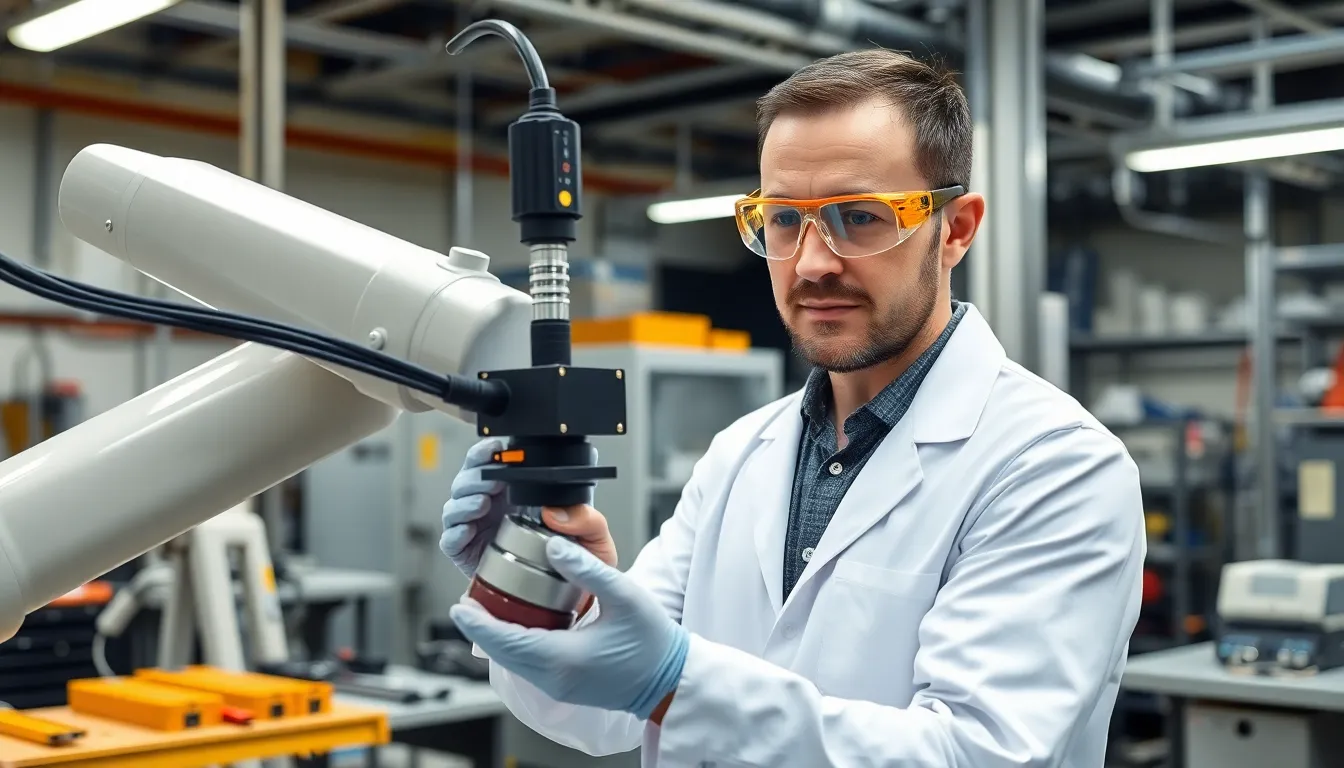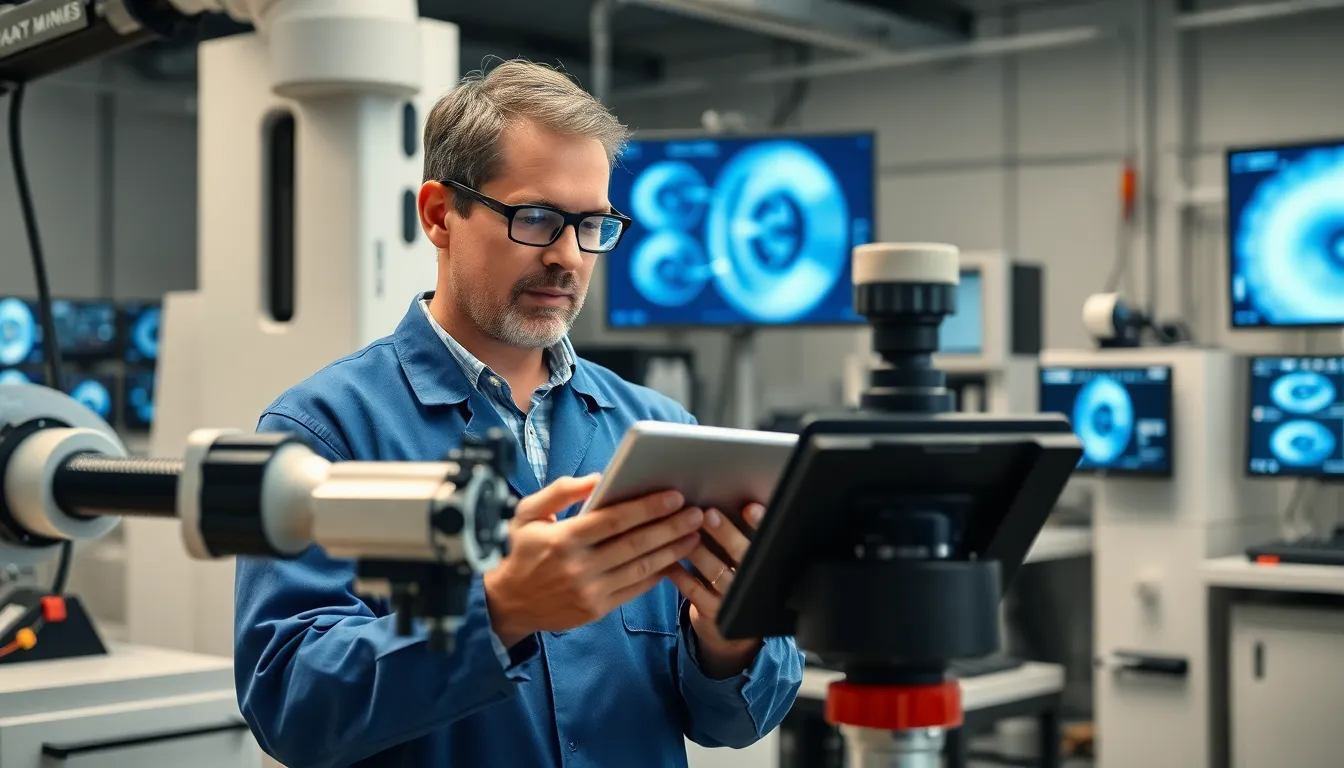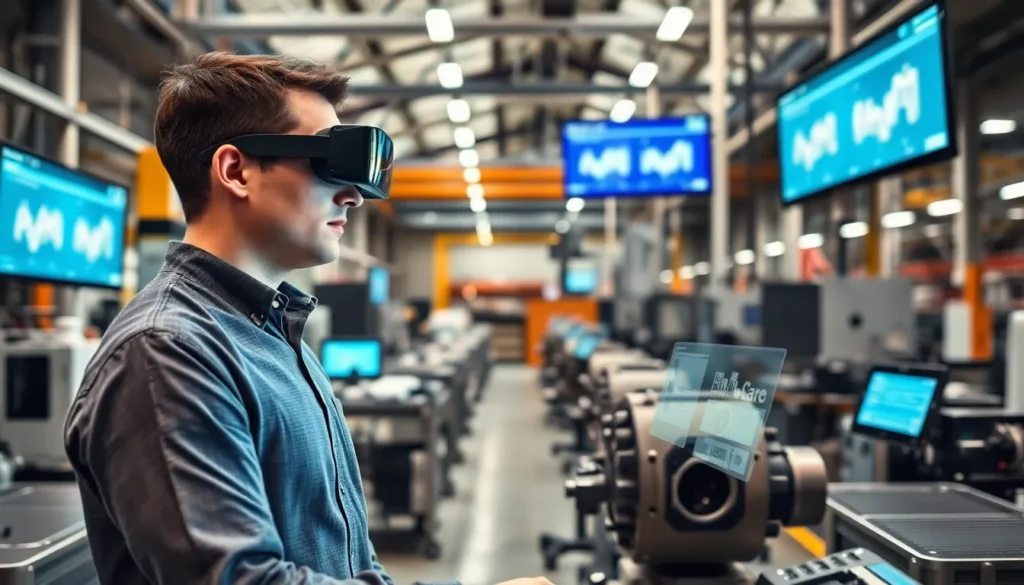In a world where precision is king, vision positioning sensors are the unsung heroes of technology. These nifty devices are like the GPS for machines, helping them navigate and understand their surroundings with uncanny accuracy. If robots had a favorite tool, it’d definitely be these sensors, making them feel like they’ve got their own set of eyes—no more bumping into walls or misplacing the last cookie!
Table of Contents
ToggleOverview of Vision Positioning Sensors
Vision positioning sensors play a critical role in automation and robotics. These sensors rely on advanced imaging technologies to recognize and track objects in their surroundings. They capture visual data, enabling machines to interpret their environment accurately.
Applications of vision positioning sensors extend across various industries. Manufacturing facilities utilize these sensors to enhance assembly line efficiency. Autonomous vehicles incorporate vision positioning systems to navigate safely and avoid obstacles. Agricultural drones depend on them for precise crop monitoring and analysis.
Integration of vision positioning sensors with other technologies leads to improved performance. Combining them with LiDAR and ultrasound results in more robust environmental understanding. This synergy allows robots and machines to detect objects under varying light conditions and terrains.
Key components of vision positioning systems include cameras, illumination systems, and image processing units. Cameras capture real-time images while illumination systems enhance visibility in low-light situations. Image processing units analyze captured data, extracting relevant information for navigation and decision-making.
Accuracy and precision are essential features of vision positioning sensors. These devices often provide sub-centimeter accuracy, which is vital for applications demanding high precision. With continual advancements, they offer real-time feedback, allowing machines to make immediate adjustments.
Industry leaders invest heavily in research and development to advance vision positioning technologies. Innovations focus on enhancing sensor capabilities and reducing costs for widespread adoption. As technology evolves, vision positioning sensors are expected to drive the next generation of automation and robotic solutions.
Types of Vision Positioning Sensors

Vision positioning sensors come in various types, primarily categorized into 2D and 3D sensors, each tailored for specific applications and environments.
2D Vision Positioning Sensors
2D vision positioning sensors utilize flat image data to determine the location and orientation of objects. These sensors extract features from images and analyze them for precise positioning. Commonly employed in manufacturing, they support tasks like quality inspection and assembly line automation. Many models achieve accuracy within a few millimeters, making them reliable for high-speed processes. Environments with ample lighting favor these sensors, enabling optimal image capture. Additional capabilities include simple integration with existing systems, enhancing overall operational efficiency.
3D Vision Positioning Sensors
3D vision positioning sensors capture depth information alongside traditional image data. This capability allows for a comprehensive understanding of object shapes and spatial relationships. Often used in autonomous vehicles, they aid navigation through complex environments. His sensors provide improved accuracy, often achieving sub-centimeter precision in various conditions. Multiple technologies, such as stereo vision and structured light, contribute to their functionality, broadening their application range. Industries like robotics and logistics benefit from these sensors, streamlining processes with enhanced awareness of spatial dimensions.
Applications of Vision Positioning Sensors
Vision positioning sensors find extensive applications across various sectors, enhancing functionality and efficiency in complex environments.
Robotics and Automation
Robotics heavily relies on vision positioning sensors for accurate navigation. These sensors allow machines to identify and track objects, playing a vital role in assembly lines. By integrating with automation systems, they improve quality control processes. Their precision often reaches within a few millimeters, enabling effective performance in manufacturing. Companies increasingly adopt these technologies for tasks like picking and sorting items, as well as robotic arms used in production.
Augmented Reality Systems
Augmented reality systems benefit significantly from vision positioning sensors. These devices provide essential spatial awareness, creating immersive experiences. Users interact with digital elements overlaid on real-world environments, enhancing applications in gaming and training. By capturing detailed image data, these sensors facilitate precise overlays, aligning virtual objects with physical spaces. Developers leverage the capabilities of vision positioning sensors to improve user experiences and enable innovative applications in sectors such as education and retail.
Autonomous Vehicles
Autonomous vehicles utilize vision positioning sensors for navigation and obstacle detection. These sensors provide crucial depth information, enabling vehicles to understand their surroundings more effectively. High-resolution imaging allows for the identification of pedestrians, road signs, and other vehicles. With accuracy often reaching sub-centimeter levels, they enhance safety and reliability in driving. Manufacturers invest heavily in these sensors to advance self-driving technology, ensuring vehicles operate seamlessly in various environments.
Advantages of Using Vision Positioning Sensors
Vision positioning sensors provide several advantages that enhance their effectiveness in various applications. High accuracy is one of the most significant benefits, often achieving precision of sub-centimeter levels. This level of accuracy enables machines to navigate complex environments reliably.
Enhanced object detection is another key advantage. These sensors allow for real-time tracking of objects, which is crucial in dynamic settings such as automated warehouses and production lines. They empower robots to recognize and interact with diverse items, streamlining workflows considerably.
Improved safety is evident in applications like autonomous vehicles. By using vision positioning sensors, vehicles can detect pedestrians and obstacles, helping to prevent accidents and enhance overall road safety. This capability is vital for gaining public trust in self-driving technology.
Cost efficiency contributes significantly to their appeal. As components of automated systems, vision positioning sensors reduce the need for manual oversight, translating to lower labor costs and higher productivity. Industries experience a marked return on investment through enhanced operational efficiency.
Versatility stands out as another notable advantage. These sensors apply across various sectors, from manufacturing to logistics and agriculture. The adaptability of vision positioning sensors makes them essential tools for today’s evolving technological landscape.
Additionally, they facilitate seamless integration with other technologies. Combining vision positioning sensors with systems like LiDAR improves environmental awareness and object recognition. This integration enhances performance in tasks requiring high precision, reinforcing their importance in automation and robotics.
Overall, vision positioning sensors continuously advance, driving innovation and improving functionalities in numerous fields. Their advantages solidify their role as indispensable components in modern technology.
Challenges and Limitations
Vision positioning sensors face several challenges and limitations that affect their performance and applicability. Environmental conditions such as lighting variations can significantly influence the accuracy of these sensors. When ambient light fluctuates, sensor performance may degrade, leading to inconsistent object recognition and tracking.
Processing power stands as another crucial factor. High-resolution imaging generates vast amounts of data, often requiring powerful processors for real-time analysis. Limited processing resources can create bottlenecks, impacting the system’s responsiveness and efficiency.
Obstacles often arise regarding integration with existing technologies. Although vision positioning sensors complement powerful systems like LiDAR and ultrasound, combining different technologies may pose compatibility issues. Ensuring seamless communication between sensors impacts overall system reliability.
Cost remains a significant concern as well. Developing advanced vision positioning sensors involves substantial investment in research and manufacturing. Companies face challenges in balancing performance improvements with controlling costs to encourage widespread adoption across industries.
Limited range can restrict sensor applicability in certain environments. Most vision positioning sensors operate effectively within specific distances, and significant deviations from that range can lead to diminished accuracy. Therefore, organizations need to consider these range limitations when deploying the technology.
Varying object characteristics can also pose challenges for vision positioning sensors. Surface textures, colors, and patterns may affect the reliability of object detection. Ensuring consistent performance across diverse scenarios requires ongoing innovation in imaging algorithms and sensor design.
Lastly, handling dynamic environments creates further complications. Rapidly changing surroundings can overwhelm sensor capabilities, complicating accurate navigation and tracking. Solutions must continuously evolve to address these challenges for vision positioning sensors to achieve robust performance in increasingly complex applications.
Vision positioning sensors are revolutionizing how machines perceive and interact with their surroundings. Their ability to provide precise navigation and object recognition is essential for advancing automation across various industries. As technology continues to evolve, these sensors will become even more integrated with other systems, enhancing their capabilities and expanding their applications.
Investments in research and development are paving the way for innovations that will tackle existing challenges, such as environmental adaptability and processing power. With ongoing advancements, vision positioning sensors are set to play a pivotal role in shaping the future of robotics, autonomous vehicles, and beyond. Their continued evolution promises to enhance safety, efficiency, and functionality in an increasingly automated world.





